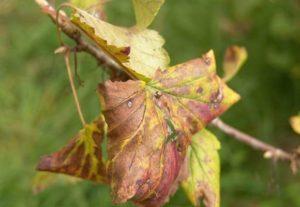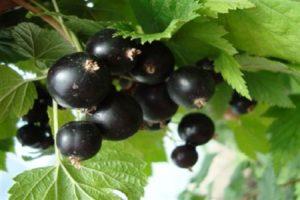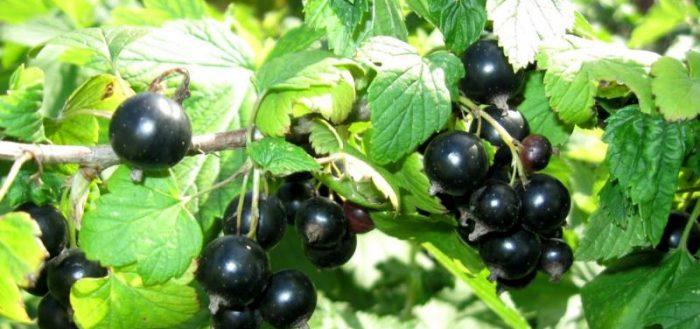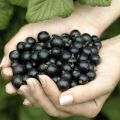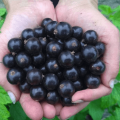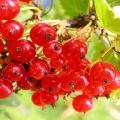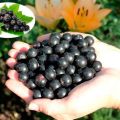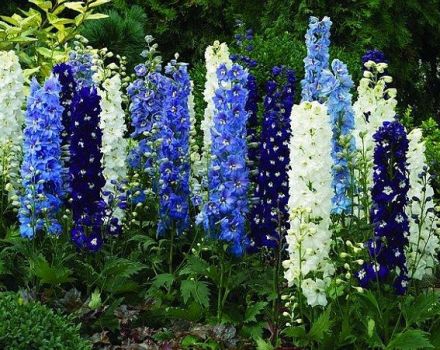Description and characteristics of Vologda currants, cultivation and care
Black currant of the Vologda variety is another of the most undemanding, as well as large-fruited varieties of Russian selection. The history of this specimen dates back to the 90s. Then the variety got into the State Register. Vologda belongs to frost-resistant species with a late ripening period. Thanks to these features, he began to enjoy popularity. The variety is widespread in the middle Volga, the Far East and North-West of Russia.
Characteristics and description of currant Vologda
The height of the bush reaches up to 1.5 meters. These are not too large indicators, but the plant is very spreading to the sides, which means that currant plantings do not like crowdedness and require a lot of free space. The foliage on the shoots is dark green in color, in autumn it becomes reddish-brown, and the shoots are bent, arching. The flowering of currants occurs in May, the flowers are small, yellow-green, collected in racemose inflorescences.
The first harvest can be taken at the end of July. The bunches of the Vologda currant are rather long, from 8 to 10 cm, on which there are up to 14 large berries. The skin on the berries is very dense, weighing up to 2 grams, on the top of the brush there are specimens weighing up to 3 grams. The fruit tastes more sour than sweet. This fact is due to the presence of a small amount of sugars and an abundance of ascorbic acid. The currant does not ripen amicably. The ripening period lasts until the end of August.
Vologda differs in weak fruit crumbling, but in the sun the berries can burst and become soft.
The variety is self-pollinated, but if you plant several currant bushes on the site, then the yield will be much higher. The crop can be removed in the second year of life.
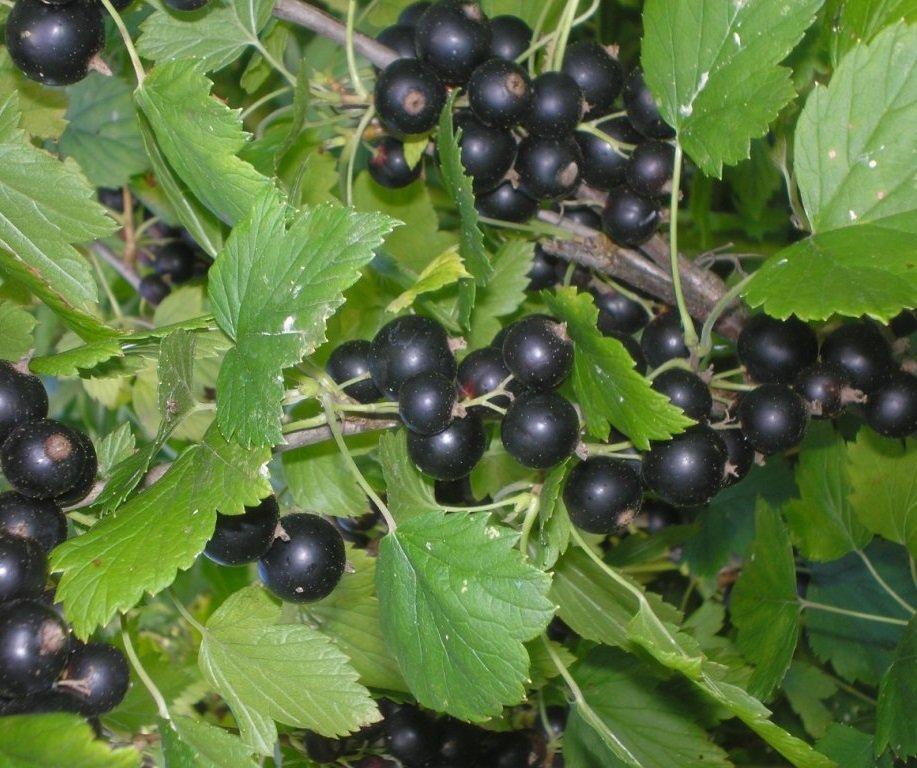
Advantages and disadvantages of Vologda
The description of the black currant variety Vologda testifies to its advantages, such as:
- Good survival rate when planting in the fall.
- Fruiting begins in the second year.
- Resistant to low winter temperatures.
- The berries are large and do not crumble.
- The variety is resistant to powdery mildew, kidney mites and other specific diseases.
- Rich content of ascorbic acid in fruits.
- Easily tolerates any weather and climatic conditions of growth.
The disadvantages of currants are a prolonged period, as well as untimely ripening of berries on the brush. In addition, when overripe, the berries burst and acquire a sour taste, begin to ferment and become moldy. Bushes require a lot of space to grow.
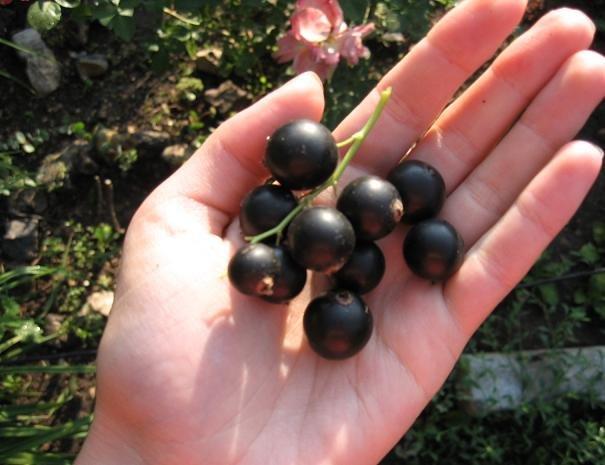
Growing features
Like other varieties, Vologda currants have certain planting rules.
Landing dates
It is worth starting to plant a culture from the end of September to the end of October. This is the optimal time, at this time the mother bush is already shedding foliage, accumulating nutrients for wintering. The same thing happens in the lateral offspring. If such seedlings are transplanted, they quickly adapt to the onset of the first cold weather.
An interesting fact is that the root system of the black currant variety Vologda does not enter a state of dormancy, which means it develops in winter. Therefore, new plantings quickly take root and can give first results next year.
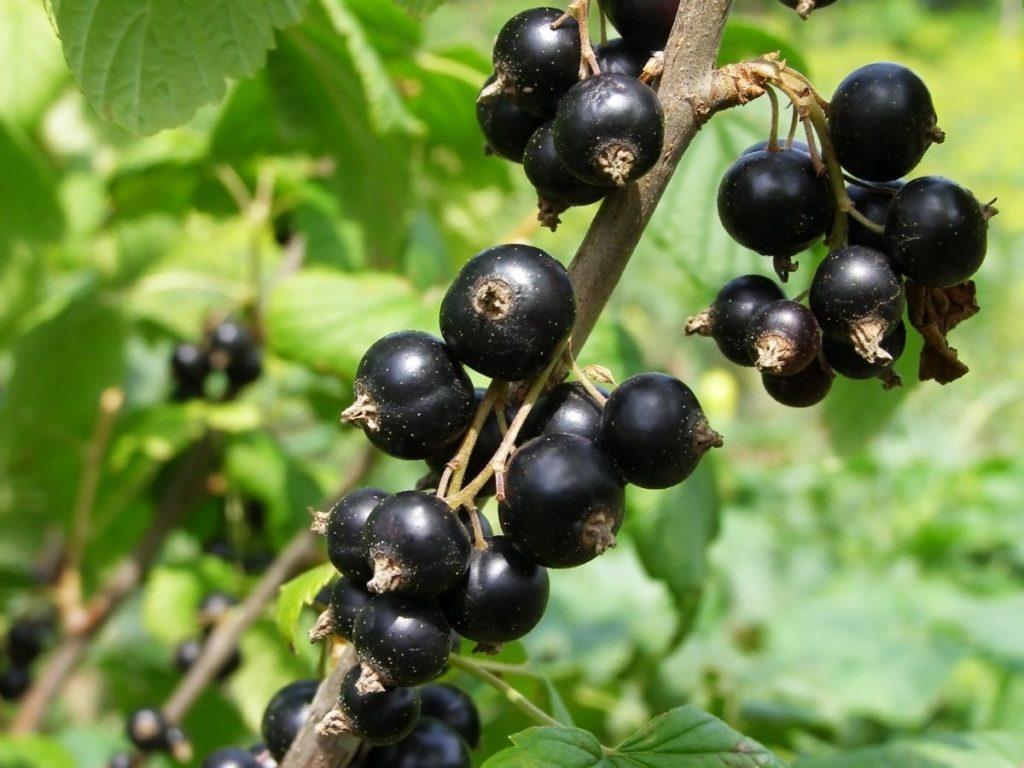
In the spring, Vologda can also be planted, but they do it in April, after the snow melts and the upper layers of the soil thaw. This option for planting dates may not be suitable for many growing regions, since in April the weather is not yet stable, and the threat of frost persists.
Preparing the garden
The garden bed is located in an area with good lighting, protected from through winds and the scorching sun. Typically, currant plantings can be observed along high fences at their summer cottage.
To prepare the soil for planting currants, it is important to follow these steps:
- Carefully dig up the land on the site, remove weeds from the roots, level.
- With increased acidity of the soil, lime is applied at the rate of ½ kg per 1 m2.
- Lime is mixed with soil using a rake.
- Make holes. The dimensions of the fossa should be: up to 40 cm deep, up to 50 cm wide.

Important! The site should be located away from the close occurrence of groundwater.
Sapling selection
It is better to plant two-year-old seedlings. They should be strong with a well-developed root system. Shoots rooted in separate glasses are perfect. They will more easily bear the stress during the transplant, and will also quickly accept and will not hurt.
A purchased seedling should have two or more main lignified roots and smaller lateral roots. Saplings with one shoot are also not suitable for fruitful planting and future plant growth.
Advice! The roots should be yellow, if the color is dark, it means that the seedling was not stored correctly, was exposed to freezing or decay. If the seedling has blossomed, then the leaves should be bright green, without visible damage, and the height of the shoots should be at least 35 cm.
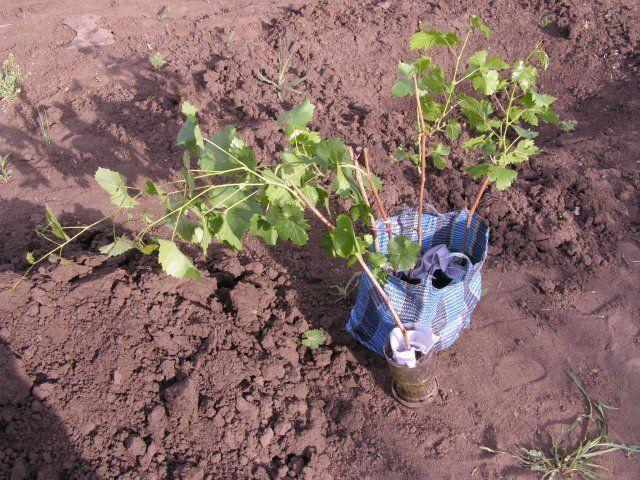
Distance between bushes
For one adult blackcurrant bush, a distance of 1.5 meters is required to the neighboring bush. If it is decided to place the currants along the fence, then 1.5 meters should also be retreated from it.
With the row arrangement of the bushes on the garden bed, about 2.5 meters are left in the aisles so that you can easily move along the strip, for example, with a wheelbarrow during garbage removal or with a watering can.
Process technology
Half a bucket of compost and rotted humus are poured into a previously prepared hole. Organic matter can be replaced with mineral fertilizers: up to 200 g of superphosphate, up to 50 g of potassium sulfate or phosphorus and potassium about 20 g. A bucket of water is poured into the hole and allowed to soak a little. A young seedling is lowered into the hole.
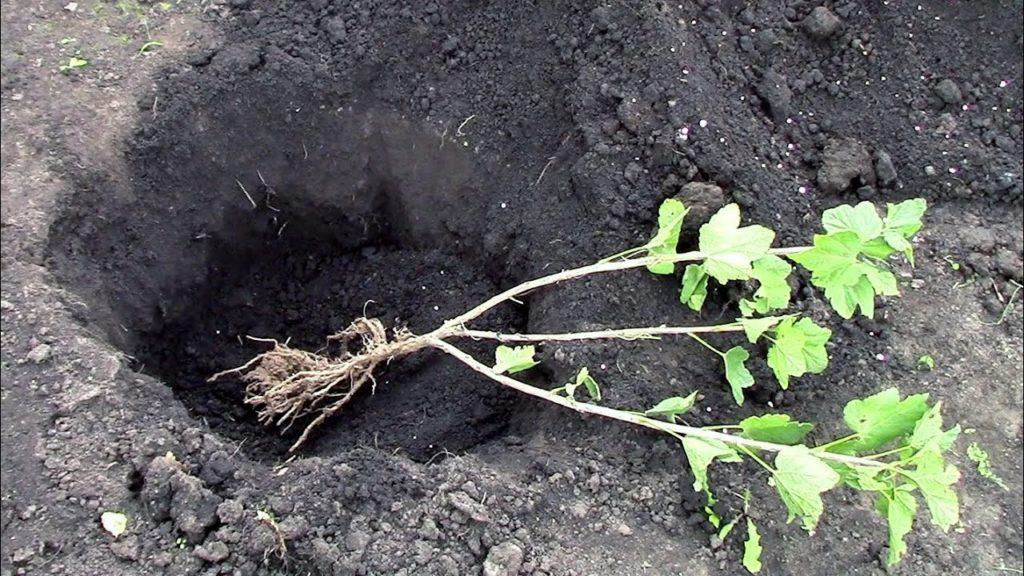
Important! Set the seedling at an angle of 45 degrees so that the bush gains strength faster. In this position, additional buds will form faster on the root neck.
The roots are well spread and sprinkled with soil, then trample the soil around the bush. It is necessary to ram very well so that later the earth does not crack, and a void does not appear in the roots. A small trench is made around the seedling, into which mulch is poured, which allows to retain moisture in the ground and prevent its evaporation.
The nuances of caring for the variety
Timely implementation of agricultural techniques, as well as their correctness, allow the black currant of the Vologda variety to start growing faster, gain strength and give an excellent harvest.
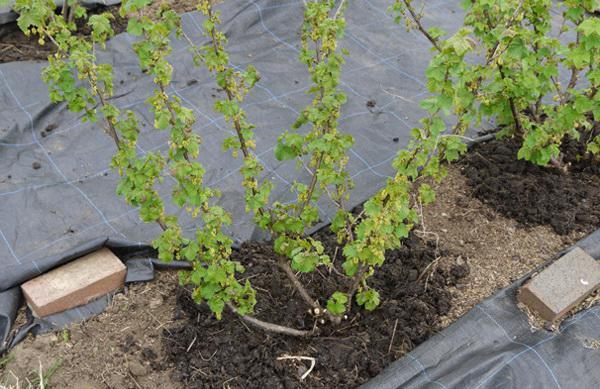
Top dressing
This is the main technique for growing any fruit and berry crop. Future yield indicators directly depend on it. What fertilizers are needed for currants and when they are applied, you should find out in advance.
Fertilizers applied during the planting process are sufficient for two years of active growth of the seedling. Starting from the third year, the currants begin to be fed:
- In the fall, when the currants shed their foliage, organic matter is introduced. The area under the bush is covered with humus, and then dug up together with the top layer of soil.
- In addition to organic matter, mineral fertilizers are also introduced in the fall: potassium, phosphorus and nitrogen in the quantities specified in the instructions specifically for currants. Dig up along with organic matter.
- During the formation of the ovary, potassium-phosphorus is introduced, this is superphosphate and potassium sulfate.
- Nitrogen fertilizing is carried out three times a year: during the first sap flow, during flowering and after picking berries.
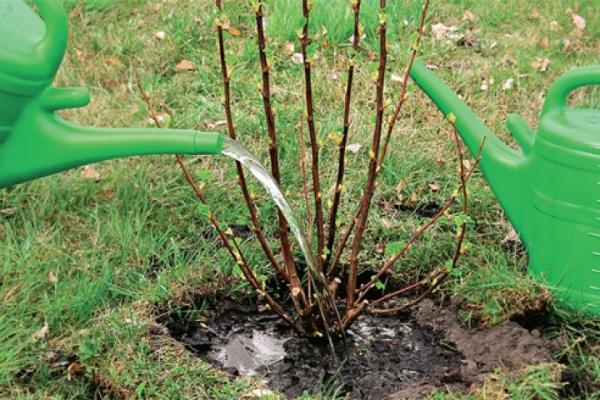
Correct application of organic and mineral fertilizers contributes to the good development of the bush in the spring, nutrition of the root system, and the establishment of new buds in the fall.
Watering
Watering is an important procedure for currant bushes:
- The first irrigation is carried out after the awakening of the plant, but before the buds appear. Pour hot water (70 degrees) with baking soda dissolved in it. This will destroy viruses, eggs and larvae of harmful insects.
- Further, moistening is carried out as the earth dries up. Here you need to take into account the weather conditions. Each bush requires up to 60 liters of water.
- Water the currants during flowering, during drought, after the foliage is dropped.
- During the ripening of the fruits, irrigation is reduced.

Important! You cannot water the Vologda currants from a hose with a direct stream under the bush, this erodes the root system.
Tillage
This includes timely weeding, loosening and mulching. Weeds can be weeded by hand or with a small hoe with a shallow depth to avoid damaging the top of the roots. In addition to eliminating weeds, the top layer of the earth becomes loose.
Loosening is also carried out after watering, after fertilization and after mulching. For mulch, you can take straw, fresh sawdust, chopped grass, peat, pine needles.
Shelter for the winter
Vologda currant does not require special shelter, as it is a winter-hardy variety. But if the winter is not very snowy, protection should be installed on the territory of the berry to collect snow. High snow cover will perfectly cover the plant from icy winds.
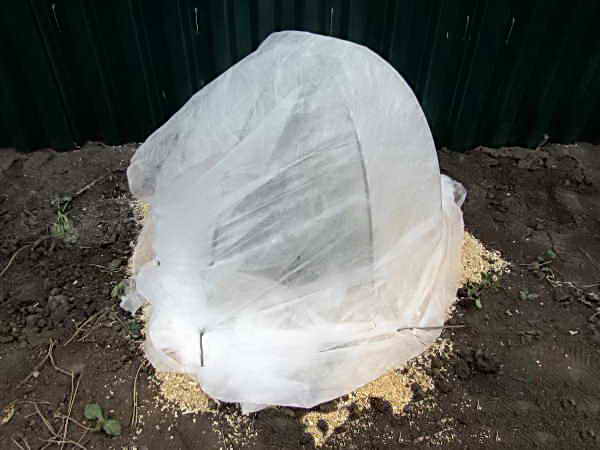
Pruning
This procedure is carried out annually. Pruning is needed for the growth of new fruit shoots, as well as for branching the bush. During the season, the currants are cut several times:
- During planting of young currants. Existing shoots are shortened by almost half, which makes it possible to develop additional strong branches.
- The berries appear on the branches at the age of 1 year. Moreover, many new shoots appear on the bush every year. Therefore, branches on which there were fruits last year are subject to pruning.
- In the spring, dried branches, broken from snow, damaged by rodents and diseases, are removed on currants.
During pruning, you should pay attention to the condition of the shoots. If the buds on the shoot are inflated, then, most likely, a tick is wielding, such shoots must be removed and burned. If the old branches are healthy, and flower buds are laid on them and there are many of them, then it is better to leave this shoot. Young shoots are often very fragile and underdeveloped, they are also cut out so that they do not pull on nutrients.

Diseases and pests
Vologda currant is a disease-resistant plant. But no one canceled preventive measures. Currants are attacked by the following diseases and pests:
| Pest / disease | Signs of defeat | Processing time | Control measures | Prevention |
| Anthracnose | Brown spots on foliage | Before kidney dissolution | 100 g Bordeaux liquid per 10 liters of water | Treat the soil under the currants with a solution of copper sulfate |
| Goblet rust | The appearance of yellow bumps on foliage, flowers, and berries | During budding and flowering | Three times treatment with Bordeaux liquid solution | Fungicide treatment |
| Terry currant | Currants lose their specific smell, leaves and flowers become smaller | In the spring before the buds appear | The affected areas of the bush are cut out or uprooted the entire bush | Timely weeding and pruning |
| Fire | The berries are covered with cobwebs | Before and after flowering | Sprayed with Karbofos solution | Autumn treatment with insecticide and digging of soil under currants |
| Glass-maker | Leaves eaten | After buds bloom | Sprayed with infusion of onion peel, garlic and pine needles | Wormwood and needles are laid out on the soil under the bush |
Collection and storage
Currants are harvested as they ripen, the end of the collection is at the end of August. The berries should be picked in the morning hours, when the sun is not in effect. Such a crop will feel better and will tolerate any movement over long distances.
There are many ways to store Vologda currants: frozen, canned (compotes, preserves, jams). In any form, currants are suitable for culinary purposes.
Currant Vologda has existed in Russia since 1995. For a fairly long period of time, she was able to become the favorite of many gardeners. When growing such a variety, one does not have to pay attention to the shortcomings, since large-fruited and abundant crops are above all.
